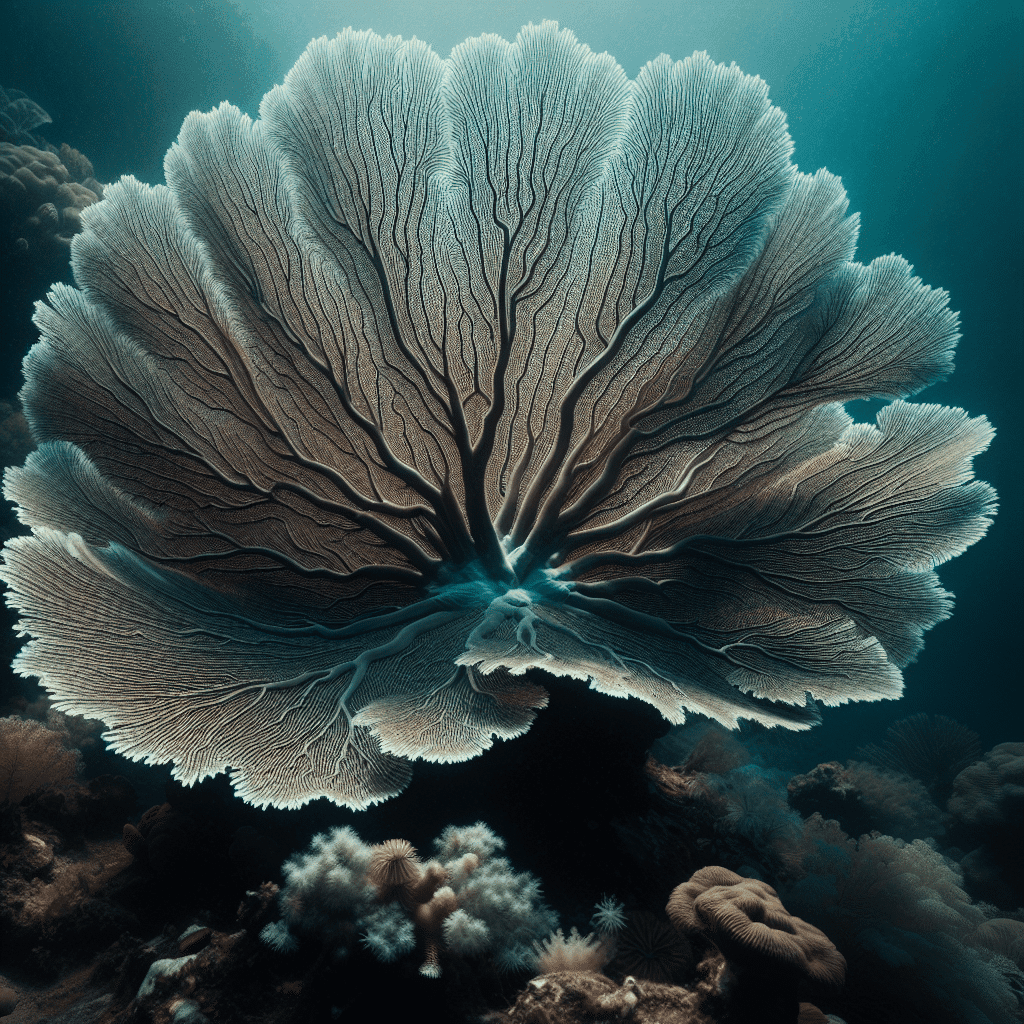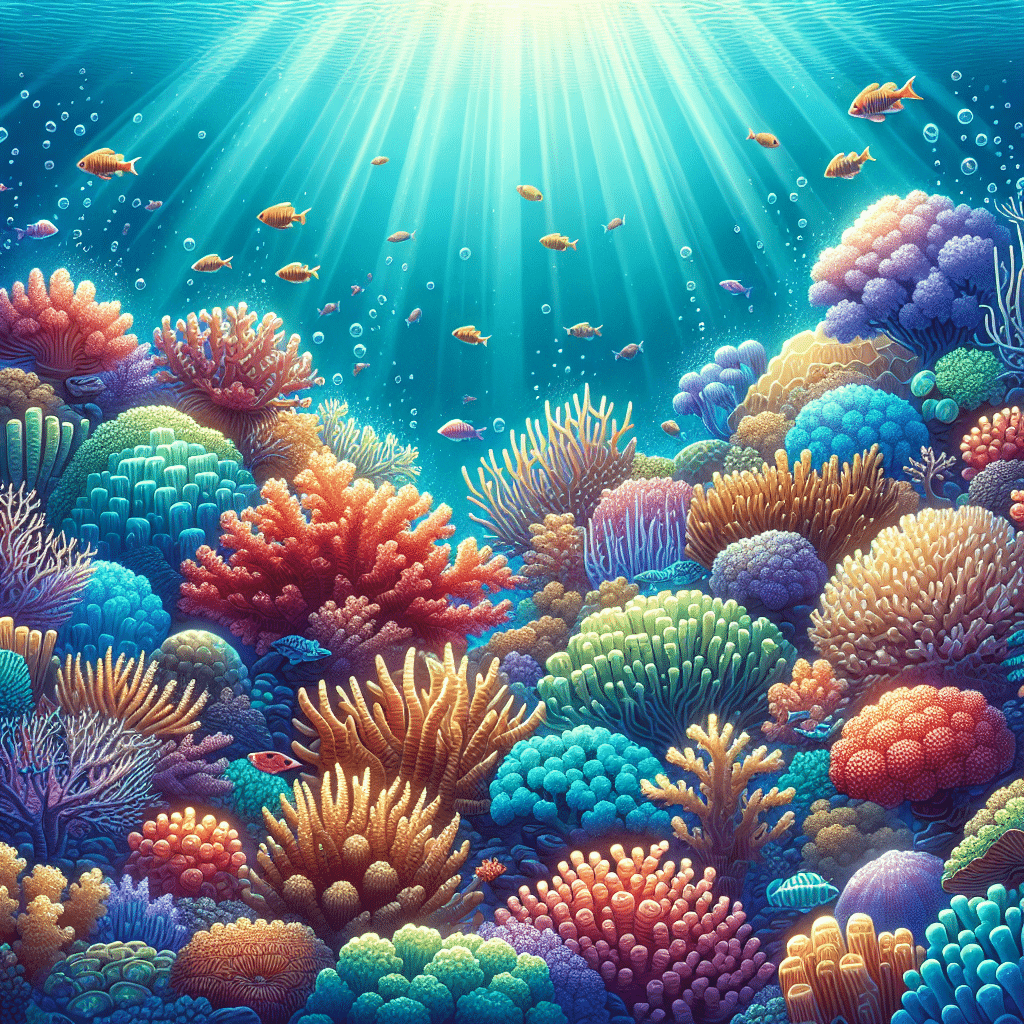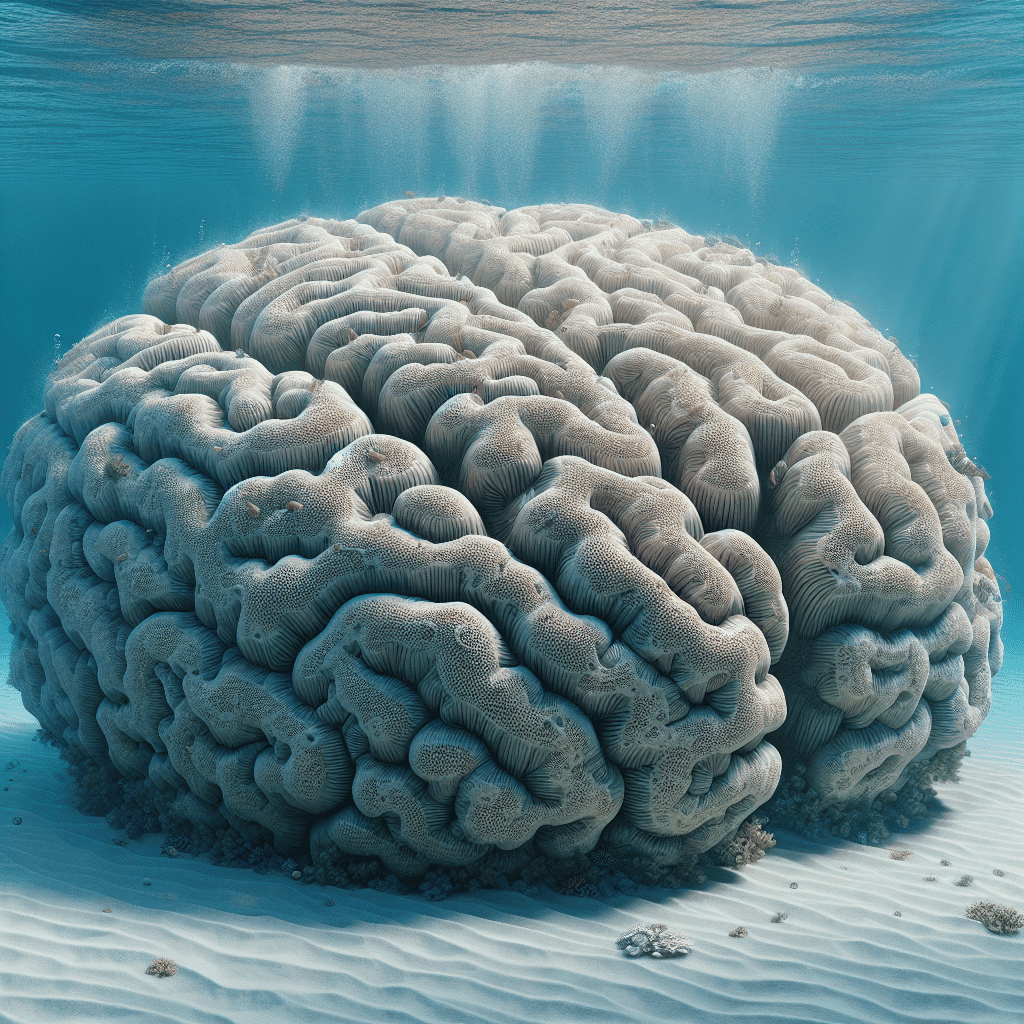Understanding Coral Reefs
Importance of Coral Reefs
Coral reefs are often referred to as the tropical forests of the ocean. They provide shelter and spawning grounds for a wide range of ocean life. I find it fascinating that over a quarter of all marine life depends on these vibrant ecosystems. Coral reefs are home to at least 25% of known marine species, offering food, shelter, and breeding grounds for various creatures, including turtles, dolphins, and manta rays (Great Barrier Reef Foundation).
Beyond just being a habitat, coral reefs play a crucial role in regulating carbon dioxide levels in the oceans. Without them, there would be an imbalance that could severely impact all marine creatures. They also contribute to the livelihoods of over a billion people around the world, with many relying on coral reefs for fishing, tourism, and other marine industries (Great Barrier Reef Foundation).
| Contribution | Impact |
|---|---|
| Marine Life Habitat | 25% of known marine species depend on coral reefs |
| Carbon Dioxide Regulation | Maintains balance of CO2 in the ocean |
| Economic Value | Supports over 60,000 jobs in Australia alone |
Coral Reef Ecosystems
Coral reefs are not just beautiful structures; they form complex ecosystems that involve various organisms. One of the key players in these ecosystems is zooxanthellae, a type of algae that lives within the coral’s tissues. In return for shelter, these algae provide oxygen, organic matter, and essential nutrients for the corals and other marine creatures (Mitsubishi Corporation).
The interconnectedness of these organisms highlights the fragility of coral reef ecosystems. Without healthy coral reefs, the entire ocean environment, and consequently our own health, could be at risk. Protecting these vital ecosystems is essential for maintaining the overall health of our planet, as the oceans sustain all forms of life on Earth (Great Barrier Reef Foundation).
For more information on different types of corals, feel free to check out our articles on brain coral, black coral, and mushroom coral.
Exploring Sea Fans
Characteristics of Sea Fans
Sea fans are a fascinating type of coral that I find particularly intriguing. They consist of numerous polyps that grow together in a flat, fan-like pattern. Each polyp has eight tentacles, which help capture food and nutrients from the water. The internal skeleton of sea fans is made from a flexible, horny scleroprotein known as gorgonin, providing support to all branches of the colony (Britannica).
Here’s a quick overview of key characteristics of sea fans:
| Attribute | Description |
|---|---|
| Structure | Composed of numerous polyps in a fan shape |
| Tentacles | Each polyp has eight tentacles |
| Skeleton | Made of gorgonin, a flexible protein |
| Habitat | Typically found in coral reefs |
Understanding these features is essential when considering how to care for fan corals in a reef tank.
Reproduction of Sea Fans
When it comes to reproduction, sea fans have an interesting process. They reproduce through fertilized eggs that develop into microscopic ciliated larvae called planulae. These tiny larvae disperse from the parent colony and eventually settle down to metamorphose into their adult form. Once settled, these newly metamorphosed polyps can give rise to an entire colony through a process known as asexual budding (Britannica).
To summarize the reproduction process:
| Stage | Description |
|---|---|
| Fertilization | Eggs develop into planulae larvae |
| Dispersal | Larvae spread from the parent colony |
| Metamorphosis | Larvae settle and grow into polyps |
| Asexual Budding | Polyps reproduce to form new colonies |
This fascinating life cycle makes sea fans a unique addition to any reef tank. If you’re interested in other types of corals, check out the various options like brain coral and mushroom coral for your setup.
Melithaea Ochracea: The Fan Coral
Overview of Melithaea Ochracea
Melithaea ochracea, commonly known as knotted fan coral, is a fascinating coral that I find particularly interesting. This coral grows in tree-like fans and thrives on coral reefs, especially in the South China Sea. Its unique structure not only adds beauty to the reef but also creates habitats for various marine species. One of the notable aspects of Melithaea ochracea is that it is azooxanthellate, meaning it does not contain the symbiotic algae that many other corals rely on for energy. This coral can be found at depths of under 3 meters, sometimes close to the low tide mark, where it often features larger colonies with vibrant yellow branches and red calyces.
I appreciate that this coral grows relatively quickly compared to traditional hard corals used in the jewellery industry, making its harvesting more sustainable. Melithaea ochracea measures 3.5 on the Mohs scale of mineral hardness, which makes it easy to work with, but it can also be easily damaged.
| Characteristic | Description |
|---|---|
| Common Name | Knotted Fan Coral |
| Habitat | South China Sea |
| Growth Form | Tree-like fans |
| Hardness (Mohs Scale) | 3.5 |
| Symbiotic Algae | Azooxanthellate |
Use in the Jewellery Industry
Melithaea ochracea is highly valued in the jewellery industry, often marketed under the name “red spongy coral” or “sponge coral” due to its porous nature. I find it intriguing that the most sought-after specimens are bright orange-red, but those with yellow or orange streaks are also popular. Most of the sponge coral available on the market has undergone treatments like stabilization, dyeing, or being crushed and mixed with epoxy resin to form desired shapes.
The affordability and ease of carving make Melithaea ochracea a favorite among jewellers. However, natural, unenhanced coral can be quite expensive and is harder to find. This makes the treated versions more accessible to consumers while still providing a beautiful option for jewellery pieces.
| Feature | Details |
|---|---|
| Market Name | Red Spongy Coral/Sponge Coral |
| Desired Color | Bright orange-red |
| Treatment | Stabilized, dyed, or crushed |
| Hardness | Easy to carve, easy to damage |
In summary, Melithaea ochracea is not only an intriguing species of coral but also plays an important role in the jewellery market. Its unique characteristics and sustainable harvesting practices make it a valuable addition to any reef tank enthusiast’s collection. For more information on different types of corals, you can explore our articles on corals, black coral, and brain coral.
Care and Maintenance of Fan Corals
Taking care of fan corals can be a rewarding experience for any reef tank hobbyist. Understanding the right location, placement, feeding, and nutrition is essential for keeping them healthy and thriving.
Location and Placement
When setting up fan corals in your tank, it’s important to consider their natural habitat. Fan corals prefer to be positioned in areas with moderate to strong water flow. This mimics their natural environment where they thrive in ocean currents. I usually place my fan corals in the mid to upper sections of my reef tank to ensure they receive sufficient light and water movement.
Here are a few tips for placement:
- Flow: Position the coral where water flow is consistent but not too turbulent.
- Lighting: Fan corals benefit from bright lighting, but indirect light is often best to prevent bleaching.
- Spacing: Make sure to leave enough space between corals to avoid competition for resources.
Feeding and Nutrition
Fan corals are filter feeders, which means they absorb nutrients from the water. In my experience, supplementing their diet with specific foods can greatly enhance their growth and health. I often use liquid coral foods or phytoplankton to provide essential nutrients.
Here’s a simple feeding guide:
| Type of Food | Frequency | Notes |
|---|---|---|
| Liquid Coral Food | 2-3 times a week | Use high-quality products designed for filter feeders. |
| Phytoplankton | Weekly | Provides essential nutrients and helps with growth. |
| Marine Snow | Bi-weekly | A mix of plankton and organic matter that can benefit various corals. |
It’s crucial to monitor water quality after feeding, as excess food can lead to nitrate and phosphate build-up. Regular water changes help maintain optimal conditions for your fan corals.
For more information on different types of corals, check out my articles on brain coral, mushroom coral, and zoanthids. Happy reefing!
Fan Coral Varieties
As a fish tank and reef tank hobbyist, I find exploring different types of fan corals fascinating. Two notable varieties are the Gorgonian Sea Fans and the Spiny Orange Gorgonian. Each has unique characteristics and care requirements that make them special additions to any reef tank.
Gorgonian Sea Fans
Gorgonian corals, also known as sea fans, are colonies of polyps that create stunning fan-like structures, dynamic sea whips, or shrub-like shapes. They position themselves perpendicular to currents, ensuring that all members of the colony receive the oxygen and food they need. Unlike hard corals, which have rigid calcium skeletons, gorgonians possess a flexible internal skeleton made of protein (Dressel Divers).
Gorgonian corals can be found in the Caribbean and warmer waters of the Atlantic, ranging from Bermuda to Brazil, Florida, and the West Indies. They come in a variety of colors, including yellow, red, pink, orange, purple, and white. The common sea fan, also known as Venus sea fan coral or West Indian sea fan, can reach an impressive height of up to 1.5 meters (almost 5 feet). Its color palette varies from white to yellowish tones or pale lavender, making it a striking addition to a tank (Dressel Divers).
| Characteristic | Description |
|---|---|
| Structure | Fan-like, dynamic, or shrub-like |
| Skeleton | Flexible internal protein skeleton |
| Height | Up to 1.5 meters (almost 5 feet) |
| Color Range | Yellow, red, pink, orange, purple, white |
Spiny Orange Gorgonian
The Spiny Orange Gorgonian is another captivating variety native to the warm Caribbean Sea. This species typically showcases a rusty orange hue, with branches that can exhibit colors ranging from yellow to brown, along with hints of amber. The colonies of the Spiny Orange Gorgonian are tall and dense, featuring uncomplicated branching. The polyps are tough, rough, and closely spaced, with pointed lower lips that add to its unique appearance (Dressel Divers).
Incorporating the Spiny Orange Gorgonian into a reef tank can enhance its visual appeal while also providing habitat for various marine organisms. The care for this variety is similar to that of other gorgonians, requiring adequate water flow and light to thrive.
| Characteristic | Description |
|---|---|
| Color | Rusty orange with yellow to brown hues |
| Branching | Tall, dense with uncomplicated branching |
| Polyps | Tough and closely spaced with pointed lower lips |
Both Gorgonian Sea Fans and the Spiny Orange Gorgonian are excellent choices for hobbyists looking to diversify their coral collection. Proper care, including monitoring water quality and ensuring adequate light and flow, will help these corals flourish in a home reef environment. If you’re interested in learning more about different types of corals, check out our articles on brain coral and black coral.
Environmental Impact of Fan Corals
Fan corals play a significant role in the health of marine ecosystems, but they face numerous threats that jeopardize their habitats. Understanding these challenges is crucial for preserving these beautiful structures.
Threats to Fan Coral Habitats
Several factors threaten the delicate ecosystems where fan corals thrive. Here are some of the main threats:
| Threat | Description |
|---|---|
| Climate Change | Rising ocean temperatures and acidification affect coral health. Warmer waters lead to coral bleaching, which can be fatal for fan corals. |
| Overfishing | The decline of fish populations disrupts the balance of coral reef ecosystems, as many fish species rely on healthy coral habitats for food and shelter. |
| Pollution | Runoff from agriculture and urban areas introduces harmful chemicals and sediments into the ocean, negatively impacting coral health. |
| Habitat Destruction | Coastal development and destructive fishing practices can lead to direct damage to coral reefs and their surrounding habitats. |
Coral reefs are vital for maintaining the health of our oceans and the creatures that inhabit them. They are not only home to countless species but also serve as crucial carbon sinks, absorbing carbon dioxide more efficiently than terrestrial forests (Great Barrier Reef Foundation).
Conservation Efforts
To combat these threats, various conservation efforts are underway to protect fan corals and their habitats. Here are some key initiatives:
| Conservation Effort | Description |
|---|---|
| Marine Protected Areas (MPAs) | Establishing MPAs helps safeguard coral reefs from harmful activities like overfishing and pollution. |
| Restoration Projects | Organizations are actively involved in restoring damaged coral reefs through coral gardening and transplantation techniques. |
| Sustainable Fishing Practices | Promoting sustainable fishing methods helps to maintain fish populations and protect coral ecosystems. |
| Public Awareness Campaigns | Educating the public about the importance of coral reefs and the threats they face encourages support for conservation initiatives. |
By implementing these conservation strategies, we can work towards preserving the delicate balance of our marine ecosystems. The health of coral reefs directly correlates with the health of our oceans, which in turn affects our own well-being. Interested in learning more about corals? Check out our articles on different types of corals like brain coral or black coral.
Fan Corals in Diving
Diving Among Fan Corals
Diving among fan corals is an exhilarating experience that many divers cherish. These stunning underwater structures, known as gorgonian corals, create beautiful, fan-like shapes that add an enchanting element to the reefs. They thrive in warm waters, particularly in the Caribbean, from Bermuda to Brazil. When I dive in these vibrant ecosystems, the sight of these corals swaying gracefully with the currents is simply mesmerizing.
Gorgonian corals play an essential role in reef ecosystems, providing habitat for various marine species. Their flexible structure allows them to position themselves perpendicular to currents, maximizing their exposure to food and oxygen. This positioning not only benefits the corals but also creates a dynamic environment for fish and other sea creatures to thrive.
| Coral Type | Height | Color Range |
|---|---|---|
| Common Sea Fan | Up to 1.5 meters | White, yellowish, pale lavender |
| Spiny Orange Gorgonian | Tall and dense | Rusty orange, yellow, brown |
As I explore these underwater gardens, I often notice how the colors of the corals vary from yellow to red, with hues of pink, orange, purple, and white. Each dive offers a unique view of these colorful formations, making each trip a new adventure.
Unique Features for Divers
One of the most fascinating aspects of diving among fan corals is their unique structure and flexibility. Unlike hard corals with rigid calcium skeletons, gorgonian corals have a flexible internal skeleton made of protein. This allows them to move with the currents, creating a stunning visual display in the water.
While diving, I often observe the intricate details of the coral’s polyps. These tiny creatures extend from the coral and come alive when they sense food in the water. Their vibrant colors and delicate movements add an extra layer of beauty to the dive experience.
However, it’s essential to be mindful of the fragility of these ecosystems. Gorgonian forests, often referred to as the “trees of the sea,” face threats from invasive algae and rising water temperatures. As a diver, I always ensure to respect these habitats by not touching or disturbing the corals. This way, I contribute to the preservation of these incredible underwater environments for future generations.
For those interested in learning more about different types of corals, be sure to check out articles on brain coral, black coral, and mushroom coral. Each offers its own unique beauty and role within the reef ecosystem.
Future of Fan Corals
Climate Change Effects
As I look ahead to the future of fan corals, one significant factor is climate change. Rising ocean temperatures and changing water chemistry can have profound effects on coral ecosystems. For instance, the pink sea fan coral (Eunicella verrucosa) is expected to not only retain its current habitat but also expand northward due to warmer waters and lower oxygen levels. This migration could bolster marine biodiversity in areas like the Channel Islands and northwest France over the next several decades (Science Connected Magazine).
However, increased temperatures can also lead to coral bleaching, a phenomenon where corals expel the algae living in their tissues, causing them to lose color and, ultimately, their livelihood. This stress can significantly reduce the health of coral reefs and the organisms that depend on them.
Projected Habitat Changes
With climate change driving habitat shifts, it’s crucial for hobbyists like me to understand how these changes affect our reef tanks. For example, the Spiny Orange Gorgonian thrives in warm Caribbean waters, but its habitat could be affected by temperature changes and ocean acidification (Dressel Divers).
Additionally, understanding these projected shifts can assist conservation efforts. By identifying areas that may become critical for future coral colonies, we can help protect and restore these ecosystems. Coral reefs play a vital role in building reef systems and supporting rich biodiversity, highlighting the importance of conservation for both fan corals and the myriad of species that rely on them for habitat (Science Connected Magazine).
As I consider the future of my reef tank, I aim to stay informed about these environmental changes. This knowledge will help ensure that I create an optimal environment for my fan corals and contribute to the broader conservation efforts needed to protect these beautiful ecosystems.



